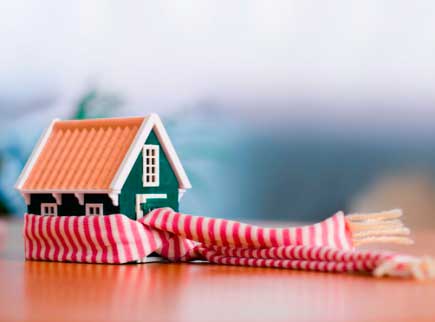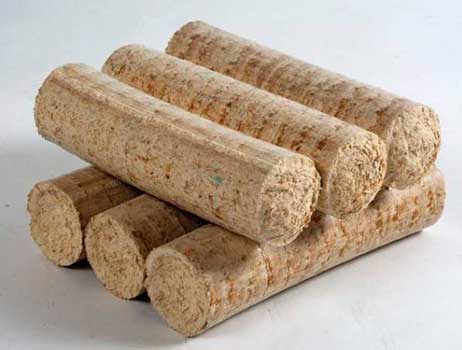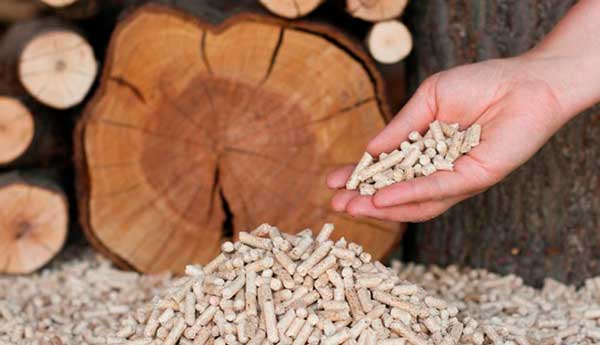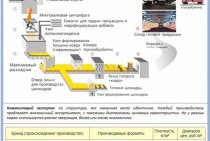How to calculate gas consumption for home heating
Gas is still the cheapest type of fuel, but the cost of connection is sometimes very high, so many people want to first assess how economically justified such costs are. To do this, you need to know the gas consumption for heating, then it will be possible to estimate the total cost and compare it with other types of fuel.
Method of calculation for natural gas
The approximate gas consumption for heating is calculated based on half the capacity of the installed boiler. The thing is that when determining the power of a gas boiler, the lowest temperature is laid. This is understandable - even when it is very cold outside, the house should be warm.
You can calculate the gas consumption for heating yourself
But it is completely wrong to calculate the gas consumption for heating according to this maximum figure - after all, in general, the temperature is much higher, which means that much less fuel is burned. Therefore, it is customary to consider the average fuel consumption for heating - about 50% of the heat loss or boiler power.
We calculate the gas consumption by heat loss
If there is no boiler yet, and you estimate the cost of heating in different ways, you can calculate from the total heat loss of the building. They are most likely familiar to you. The methodology here is as follows: they take 50% of the total heat loss, add 10% to provide hot water supply and 10% to heat outflow during ventilation. As a result, we get the average consumption in kilowatts per hour.
Next, you can find out the fuel consumption per day (multiply by 24 hours), per month (by 30 days), if desired - for the entire heating season (multiply by the number of months during which the heating works). All these figures can be converted into cubic meters (knowing the specific heat of combustion of gas), and then multiply cubic meters by the price of gas and, thus, find out the cost of heating.
Heat loss calculation example
Let the heat loss of the house be 16 kW / h. Let's start counting:
- average heat demand per hour - 8 kW / h + 1.6 kW / h + 1.6 kW / h = 11.2 kW / h;
- per day - 11.2 kW * 24 hours = 268.8 kW;
- per month - 268.8 kW * 30 days = 8064 kW.
The actual gas consumption for heating still depends on the type of burner - modulated are the most economical
Convert to cubic meters. If we use natural gas, we divide the gas consumption for heating per hour: 11.2 kW / h / 9.3 kW = 1.2 m3 / h. In calculations, the figure 9.3 kW is the specific heat capacity of natural gas combustion (available in the table).
By the way, you can also calculate the required amount of fuel of any type - you just need to take the heat capacity for the required fuel.
Since the boiler does not have 100% efficiency, but 88-92%, you will still have to make adjustments for this - add about 10% of the figure obtained. In total, we get the gas consumption for heating per hour - 1.32 cubic meters per hour. You can then calculate:
- consumption per day: 1.32 m3 * 24 hours = 28.8 m3/day
- demand per month: 28.8 m3 / day * 30 days = 864 m3 / month.
The average consumption for the heating season depends on its duration - we multiply it by the number of months that the heating season lasts.
This calculation is approximate. In some month, gas consumption will be much less, in the coldest - more, but on average the figure will be about the same.
Boiler power calculation
Calculations will be a little easier if there is a calculated boiler capacity - all the necessary reserves (for hot water supply and ventilation) are already taken into account. Therefore, we simply take 50% of the calculated capacity and then calculate the consumption per day, month, per season.
For example, the design capacity of the boiler is 24 kW. To calculate the gas consumption for heating, we take half: 12 k / W. This will be the average need for heat per hour. To determine the fuel consumption per hour, we divide by the calorific value, we get 12 kW / h / 9.3 k / W = 1.3 m3. Further, everything is considered as in the example above:
- per day: 12 kW / h * 24 hours = 288 kW in terms of the amount of gas - 1.3 m3 * 24 = 31.2 m3
- per month: 288 kW * 30 days = 8640 m3, consumption in cubic meters 31.2 m3 * 30 = 936 m3.
You can calculate gas consumption for heating a house according to the design capacity of the boiler
Next, we add 10% for the imperfection of the boiler, we get that for this case the flow rate will be slightly more than 1000 cubic meters per month (1029.3 cubic meters). As you can see, in this case everything is even simpler - fewer numbers, but the principle is the same.
By quadrature
Even more approximate calculations can be obtained by the quadrature of the house. There are two ways:
Calculation of boiler power for home heating
Autonomous heating for a private house is affordable, comfortable and varied. You can install a gas boiler and not depend on the vagaries of nature or failures in the central heating system. The main thing is to choose the right equipment and calculate the heat output of the boiler. If the power exceeds the heat needs of the room, then the money for installing the unit will be thrown to the wind. In order for the heat supply system to be comfortable and financially profitable, at the design stage it is necessary to calculate the power of the gas heating boiler.
The main values \u200b\u200bof calculating the heating power
To make a more accurate calculation of the heating power of the boiler, you need to take into account a number of important factors that affect the final result:
- dimensions of the dwelling;
- the degree of insulation of the house;
- the presence of double-glazed windows;
- thermal insulation of walls;
- building type;
- air temperature outside the window during the coldest time of the year;
- type of wiring of the heating circuit;
- the ratio of the area of \u200b\u200bbearing structures and openings;
- building heat loss.
In houses with forced ventilation, the calculation of the heating capacity of the boiler must take into account the amount of energy needed to heat the air. Experts advise making a gap of 20% when using the result of the thermal power of the boiler in case of unforeseen situations, severe cooling or a decrease in gas pressure in the system.
With an unreasonable increase in thermal power, it is possible to reduce the efficiency of the heating unit, increase the cost of purchasing system elements, and lead to rapid wear of components
That is why it is so important to correctly calculate the power of the heating boiler and apply it to the specified dwelling. You can get data using a simple formula W = S * Wsp, where S is the area of \u200b\u200bthe house, W is the factory power of the boiler, Wsp is the specific power for calculations in a certain climatic zone, it can be adjusted according to the characteristics of the user's region
The result must be rounded up to a large value. under conditions of heat leakage into home.
For those who do not want to waste time on mathematical calculations, you can use the gas boiler power calculator online. Just keep the individual data on the features of the room and get a ready answer.
The formula for obtaining the power of the heating system
The online heating boiler power calculator makes it possible in a matter of seconds to obtain the necessary result, taking into account all of the above characteristics that affect the final result of the data obtained. In order to use such a program correctly, it is necessary to enter the prepared data into the table: the type of window glazing, the level of thermal insulation of the walls, the ratio of floor and window opening areas, the average temperature outside the house, the number of side walls, the type and area of \u200b\u200bthe room. And then press the "Calculate" button and get the result of the heat loss and heat output of the boiler.
Thanks to this formula, each consumer will be able to obtain the necessary indicators in a short time and apply them in the design of the heating system.
STEP 1 Calculate gas consumption
1. This step is the first and mandatory
in any of the above cases!
- Find out the cost of gasification (technological connection (TP)
- Obtain a connection agreement (technological connection (TP)
- Determine the technical feasibility and obtain the technical conditions for connecting to the gas distribution network (TU)
2. Why calculate gas consumption?
-
- Decide what is the purpose of using gas?
(heating, cooking, hot water, ventilation, electricity or something else). -
Choose your equipment! Go to a specialized store, select the appropriate equipment for
applications at your facility, according to your requirements!
(Stoves, boilers, flowing gas heaters, etc.). -
Equipment data sheets.
Take in the store / download on the Internet technical
passports of the selected gas-using equipment. - Prepare the technical specifications of your facility.
- Calculate the maximum hourly gas consumption!
- Decide what is the purpose of using gas?
3. How to calculate gas consumption? (Choose a method)*
* The service for calculating gas consumption at a maximum hourly gas consumption of more than 5 cubic meters is paid.
The price is set according to the current price list of GRO "PeterburgGaz".
What to choose: "Get TU ..." or "Find out the cost / get a TP agreement"?
*If you are confident in the technical feasibility of connecting your facility to the gas distribution network and intend to supply gas to your facility, you can immediately proceed to the step “GET A COST / OBTAIN A CONTRACT (TC)”, and the technical specifications (TS) will already be attached directly to the contract for technological accession (TP).
If you want to verify the technical feasibility of connecting your facility to the gas distribution network, then you have the right to obtain preliminary technical conditions (TS) , and then you need to go to the step "GET THAT ..."
How much heat is given off by liquefied or natural gas
We already know the annual consumption of the heating system. Now we must calculate the calorific value of the energy source itself - liquefied and natural gas. Using these values, we will be able to reach the amount of substance burned in the furnace of a gas boiler per year.
Calorific value is the ratio of the amount of kilowatts of energy released during the oxidation of fuel to a unit of mass or volume. Since we are interested in the main (natural) or liquefied gas used to heat the house as a source of energy, then, as a measure of matter, we will operate in cubic meters or liters. According to tabular data, the calorific value of natural gas is 33.5 MJ / m 3 or 9.3 kW / m 3 (a coefficient of 1 kW = 3.6 MJ is used for conversion). That is, when a cube of gas is burned, 9.3 kW of thermal energy is released.
LPG is a mixture of propane, ethylene and other combustible carbohydrates. And it is more "caloric" than dietary natural fuel. According to tabular data, the calorific value of a kilogram of such a substance is 45.20 MJ or 12.5 kW. But the generally accepted "unit" of liquefied fuel is liters, and its density is 0.524 kg / l. Therefore, we can say that during the combustion of a liter of liquefied mixture, 6.55 kW of thermal energy is released.
Gas boiler consumption
Among the heating systems offered today, gas boilers are the most in demand. This is due not only to the cheapness of fuel, but also to the reliability of the boiler, its simplicity and ease of use.
What types of gas boilers are known
According to their parameters, gas boilers can be:
- Floor and wall
- Single circuit and double circuit
- With atmospheric and ventilation burner
What are the advantages of gas boilers:
- Floor boilers are convenient, reliable and durable. Adequate space is required for their installation.
- Wall-mounted can be located in any free space on the wall.
- The boiler with one circuit is designed for heating. If there is a need for hot water, a boiler can be adapted to it in the kit.
- The double-circuit boiler is the most demanded, it gives out water for heating, and for use in the kitchen and in the shower. Indispensable for use in a country house and in the country.
- A gas boiler with an atmospheric burner has a fairly low noise level and can be installed near the living area. Its design is very simple, and the cost is quite affordable. Atmospheric burner requires a constant gas pressure, with its frequent decrease, the boiler can quickly fail.
- If a ventilation burner is built in, then due to the strong noise, the basement or extension to the house will be the best place for the boiler. Such a boiler has more power, and is designed for both gas and liquid fuels. It is slightly more expensive than an atmospheric burner boiler.
How to calculate gas consumption for a boiler
To find out how much “blue fuel” will be needed to heat the house during the entire heating season, you need to:
- Calculate gas consumption per day, taking as a constant that 1 kW can heat 10 sq.m. housing area. An area of 100 sq.m, respectively - 10 kW of gas per hour.
- During the day, gas consumption will be 10x24=240 kW/100 sq.m.
- For a month - 240х30=7200kW/100 sq.m. In reality, the boiler is operated at half its capacity: 7200:2=3600 kW/100 sq.m.
- For a 7-month heating season: 3600х7=25200 kW/100 sq.m. If the heating season is 5 months, then the calculation is as follows: 3600x5 \u003d 18000 kW / 100 sq.m. This is how gas consumption is calculated for any number of months.
- Now you can calculate the cash costs for the entire heating season, respectively multiplying the number of received kilowatts by the cost of 1 kW.
How to save
The financial costs of maintaining a comfortable microclimate in the house can be reduced by :
- additional insulation of all structures, installation of windows with double-glazed windows and door structures without cold bridges;
- installation of high-quality supply and exhaust ventilation (incorrectly executed system can cause increased heat loss);
- use of alternative energy sources - solar panels, etc.
Separately, it is worth paying attention to the advantages of a collector heating system and automation, thanks to which an optimal temperature level is maintained in each of the rooms. This allows you to reduce the load on the boiler and fuel consumption when it gets warm outside, to reduce the heating of the coolant that is supplied to radiators or the underfloor heating system in unused rooms
If the house has a standard radiator system, a sheet of thin foamed heat insulator with an outer foil surface can be glued to the wall behind each heating device. Such a screen effectively reflects heat, preventing it from escaping through the wall into the street.
A set of measures aimed at improving the thermal efficiency of the house will help to minimize energy costs.
How to avoid heat loss
Fuel consumption for heating a house depends on the total area of the heated premises, as well as the heat loss coefficient. Any building loses heat through the roof, walls, window and door openings, the floor of the lower floor.
Respectively, the level of heat loss depends on the following factors :
- climate features;
- wind roses and the location of the house relative to the cardinal points;
- characteristics of the materials from which building structures and roofs are erected;
- the presence of a basement / basement;
- quality of floor insulation, wall structures, attic floors and roofs;
- number and tightness of door and window structures.
The thermal calculation of the house allows you to choose boiler equipment with optimal power parameters. In order to determine the need for heat as accurately as possible, the calculation is performed for each heated room separately. For example, the heat loss coefficient is higher for rooms with two windows, for corner rooms, etc.
Note! The power of the boiler is selected with some margin relative to the calculated values obtained. The boiler unit wears out faster and fails if it regularly works at the limit of its capabilities.
At the same time, an excessive power reserve turns into an increase in financial costs for the purchase of a boiler and increased fuel consumption.
Consumption of gas boilers
When choosing a gas boiler, it is necessary to master a significant amount of information that allows you to compare the characteristics and calculate what consumption of gas heating boilers in an affordable price range will be the most profitable. It should be understood that the microclimate in your home, the consumption of liquefied gas of gas heating boilers, the amount of heated water for use for various purposes will depend on which boiler you choose.
General classification
The main offers of the market for heating appliances in the category "gas heating boiler" can be divided into the following categories:
- atmospheric or turbocharged boilers (depending on the type of chimney used; classic or coaxial);
- single-circuit or double-circuit boilers (the latter, in addition to space heating, can also provide hot water supply);
- condensing boilers (using exhaust gases to heat water and only after that a gas burner).
At the same time, the gas consumption of gas heating boilers of different categories differs very significantly, due to which the purchase of a gas boiler with a lower consumption at a higher price can bring tangible benefits in the future.
Gas consumption of gas heating boilers of various types and their price
Today, for gas boilers of the same power, the following rule can be considered fair - the lower the consumption of gas heating boilers, the higher their price. So, for example, condensing boilers, initially more expensive than boilers of other categories, will save their users 15-17% and are the most profitable.
The consumption of liquefied gas in gas-fired double-circuit heating boilers is almost the same as that of single-circuit boilers. However, they, despite a slightly higher price, will allow you to save significant funds on the supply of hot water, and thanks to this they quickly pay off.
The same trend can be seen when comparing atmospheric and turbocharged gas heating boilers - the gas consumption of the latter is lower at a higher price. It should also be noted that turbocharged boilers do not burn oxygen in the room.
How to find out the consumption of gas heating boilers?
It all depends on whether it is necessary to know exactly the consumption (that is, how many kilograms of liquefied, or cubic meters of natural gas the boiler burns per hour), which is indicated in the documents, or how much gas the boiler will burn under certain conditions per month.
In the second case, there is a generally accepted constant, according to which, with a well-designed heating system in winter, a gas boiler operates on average about 14 hours a day (except for double-circuit boilers, they work more due to the need to provide hot water).
Thus, the estimated gas consumption of gas heating boilers per month in winter can be calculated using the formula R = r * 14 * m. Where R is the consumption per month, r is the consumption per hour for the peak load of the device (indicated in the documents), 14 is the average duration of the boiler operation per day (may differ for different climatic zones and specific boilers), m is the number of days in a month. At the same time, gas is also consumed in summer (for domestic water heating), unless, of course, a backup electric boiler is installed.
However, such a calculation is very approximate and most likely, the figures obtained in practice will be seriously different, and therefore, the installation of a meter when installing the boiler is strictly mandatory.Otherwise, the installation of gas heating equipment will not justify itself and the gas payment will exceed the payment for centralized heating.





